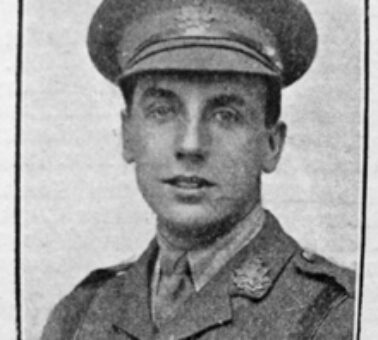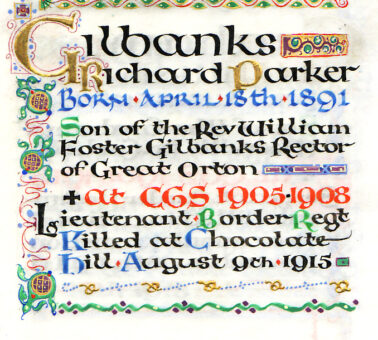Key Information
Name Richard Parker Gilbanks
DoB: April 4 1892
Regt: 6th Battalion Border
DoD: August 9 1915
Academic Career: CGS 1905-8, Rossall (1909-10), Trinity Coll Oxford(1911-14)
Biographical Information:
-
Richard Parker Gilbanks was born at the Rectory in the pretty village of Gt. Orton just a few miles outside Carlisle. He was one of a large family, with an equally large extended family. His father and grandfather were all ordained ministers and at least one uncle was ordained too! Richard was also studying for the ministry when war broke out. His grandfather had been vicar of Smethwick, Staffordshire for many years. However, his roots were Cumbrian. On his mother’s side his grandfather William Parker was a Justice of the Peace and lived at Carleton Hill, Penrith, for many years; he left over £35,000 when he died in 1892.


